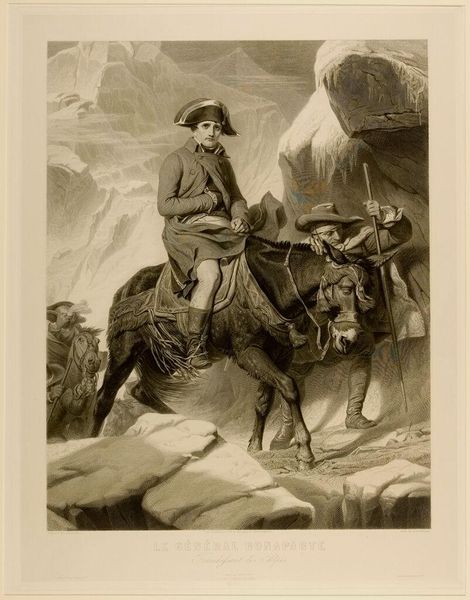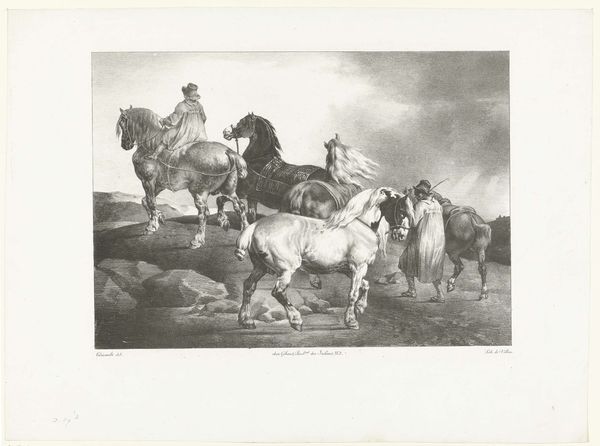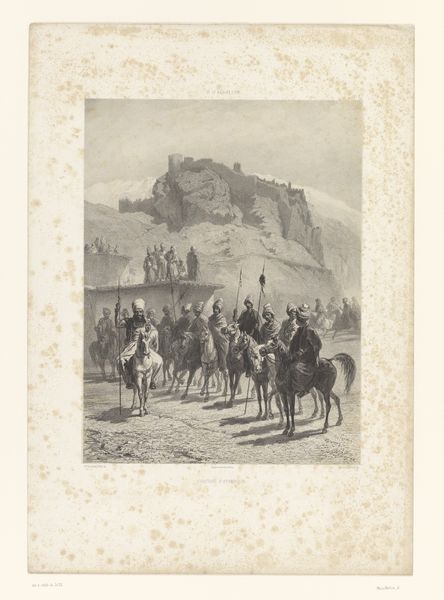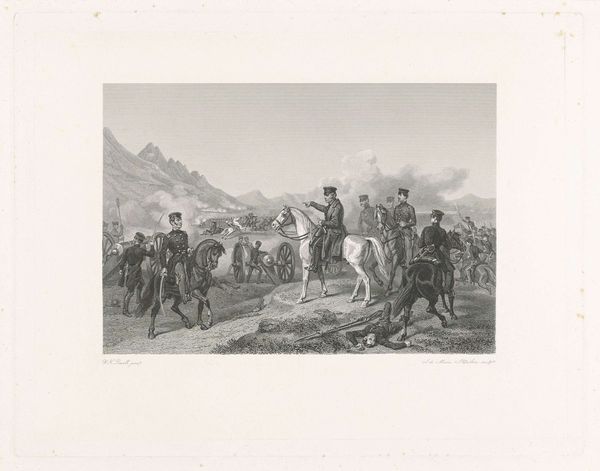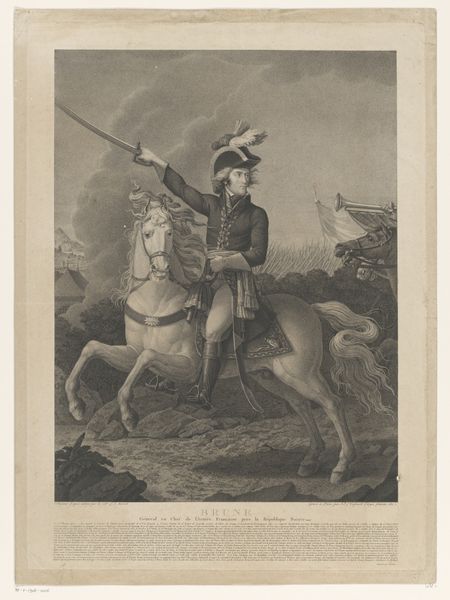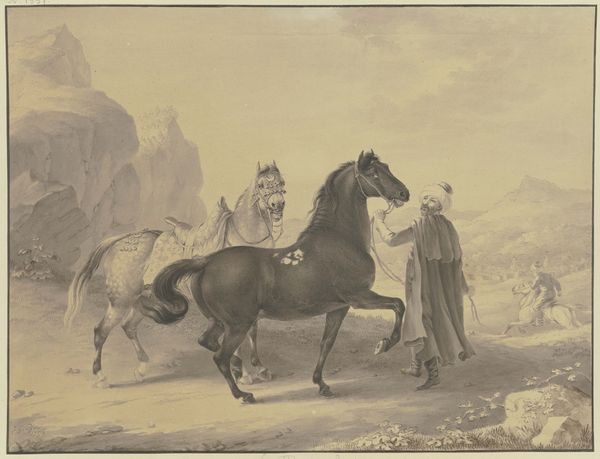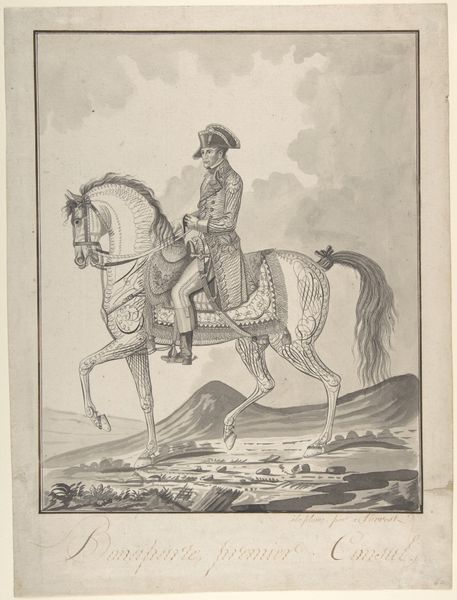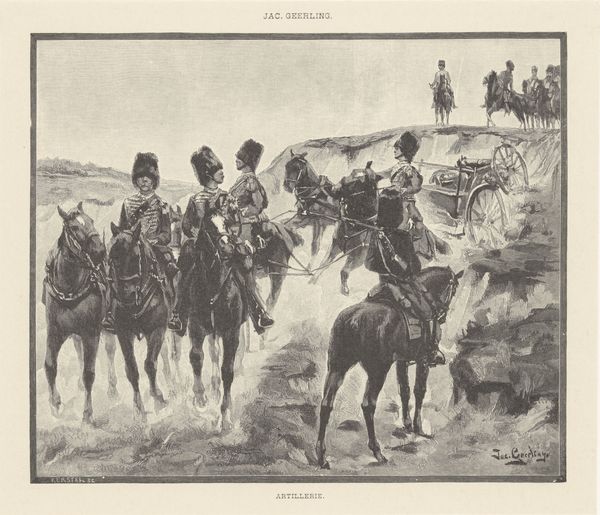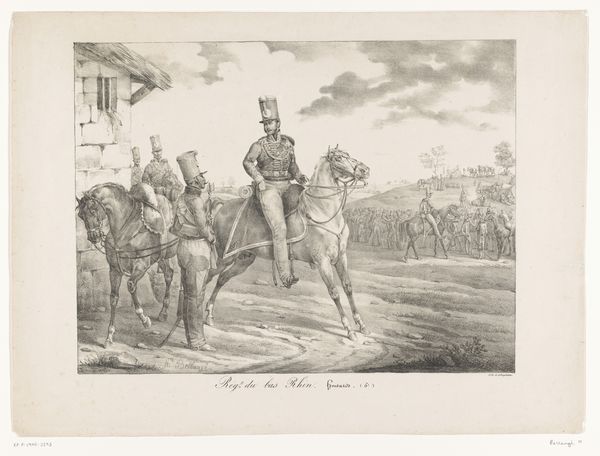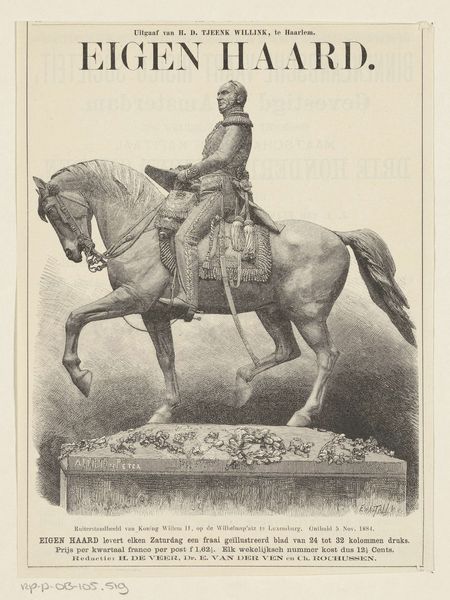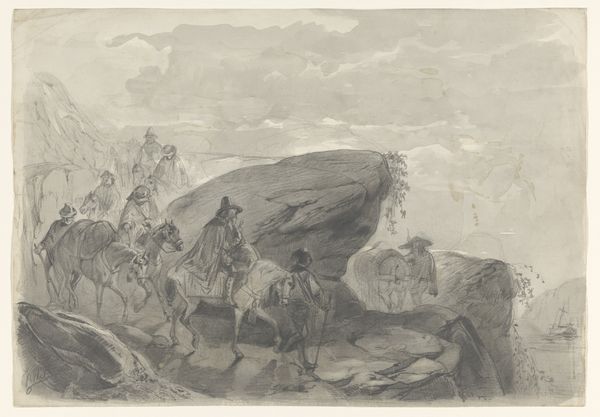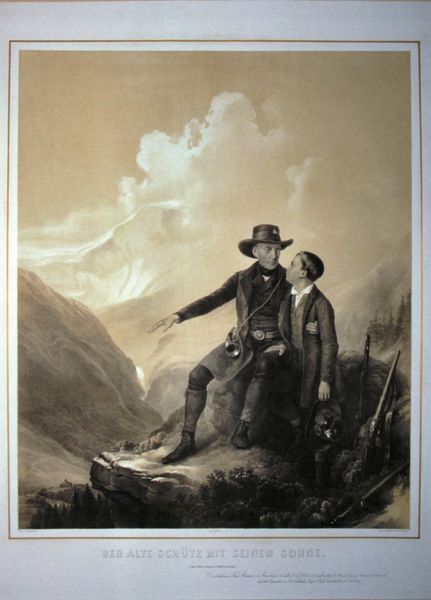
Dimensions: height 752 mm, width 579 mm
Copyright: Rijks Museum: Open Domain
Curator: Today we’re looking at "Napoleon Crossing the Alps," a print by Alphonse François, dating from between 1824 and 1888. It is an engraving and graphite work on paper. Editor: It's a strikingly austere image. The monochromatic palette and stark contrasts create a real sense of drama, don't you think? Curator: Indeed. The engraving emphasizes Napoleon's power within the wider social narratives of leadership and conquest during the period. But look closer—he is not on a mighty steed but a humble mule. This is not the glorified, masculine vision so often presented. How might the image speak to issues of class and military burden? Editor: A curious detail. The artist's rendering is intriguing—the rendering of the mountains, the figures... The stark diagonal lines in the upper left lead our eyes into the distance while simultaneously contrasting with the shadowed figures on the right. It creates visual tension. I'm most struck by the composition. Curator: Beyond that, the work invokes Jacques-Louis David's iconic painting of the same name. François both acknowledges and subverts that representation, presenting us with questions of authority and myth-making around powerful leaders, and even about the relationship between political leaders and the animals—the modes of transit and labor—that quite literally support them. How can we examine the impact of this divergence? Editor: True. Semiotically, Napoleon, usually represented heroically, is placed at an odd scale compared to the mountain's immensity, a visual cue that almost seems to…diminish him, relatively. Curator: Ultimately, François compels us to reconsider our understanding of historical narratives and to consider alternative readings of established visual tropes. It’s as much a social commentary as a portrait. Editor: I'm persuaded. This deeper contextual layer shifts my perception of its compositional impact; it’s not just formal arrangements. It becomes a commentary. I appreciate the chance to consider this from a social and political angle.
Comments
No comments
Be the first to comment and join the conversation on the ultimate creative platform.
